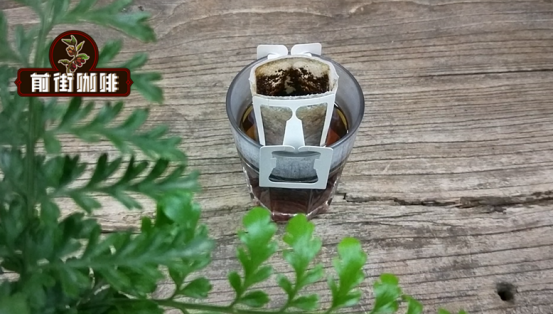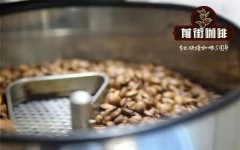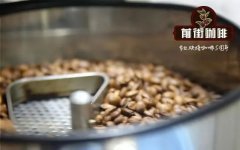Coffee leaf rust symptoms robusta coffee bean characteristics what is Arabica

Explanation of the nouns of raw coffee beans (Arabica v.s. Robusta):
Coffee tree, Rubiaceae evergreen trees, Rubiaceae has many medicinal plants, such as quinine, Dugan and so on. Most coffee trees on earth are planted in the highlands between the Tropic of Cancer and the Tropic of Cancer, so this area is also known as the "coffee belt".
The coffee beans we use to brew coffee are the seeds in the fruit of the coffee tree. They are harvested, peeled, dried and roasted. The appearance of raw beans varies from yellowish green to turquoise according to moisture content, and dark and light brown after baking. It is worth noting that the flowering period of coffee trees is very long, but the flowering period is very short, so the maturity of the dense fruit on individual trees usually varies greatly during the fruit harvest period. This makes it difficult to pick fruit mechanically, because the seeds indiscriminately picked must be raw or ripe, and the mixed flavor must not be good. Therefore, in order to harvest the fruits with the same maturity and high sweetness, the high-quality coffee beans are mostly harvested by manual identification, so the cost is high.
A coffee tree can usually be harvested for 20 to 30 years from the fifth year of planting.
Arabica (Arabica):
Native species of coffee originating in Ethiopia. But because Europeans used to buy coffee beans from Arabs, they have always called it "Arabic" coffee.
At present, the coffee bean production of Arabica accounts for about 65% of the total coffee bean production on the earth. Nowadays, people's love for the flavor of coffee comes from this original strain and its derived species.
Robusta (Robusta):
Once upon a time, people only traded Arabica coffee, so farmers only grew Arabica coffee.
Later, Arabica coffee trees developed "leaf rust". In an era when there were no pesticides and fertilizers, there was no cure for coffee beans, but coffee beans were a good business, so botanists tried to go back to Africa to see if there were stronger and disease-resistant Arabica brothers. They found this disease-resistant coffee tree in West Africa and extended it to many coffee farms that suffered from leaf rust in the early days.
This brother tree has strong disease resistance, good seed and high yield, so the price is cheap. But the taste is not good enough, now it is mostly used in industrial products, such as instant coffee, canned coffee and so on. It is worth noting that it contains twice as much caffeine per unit as Arabica beans and is prone to palpitations or sleeplessness.
Post-processing method:
After farmers harvest the coffee, they must find a way to take out the seeds and dry them before they can keep and sell them. There are a variety of strange ways to take it out: you can eat the pulp and spit out the seeds, or you can squeeze the seeds out of the pulp and rinse them by hand. However, none of these methods can deal with "a large number of" berries, so the procedures and equipment for scale processing "taking seeds out of the fruit" arises at the historic moment, these procedures are collectively referred to as "post-processing", referred to as "treatment". The place where the treatment method is carried out is called a "treatment plant".
Later, it was found that the raw bean flavor of the same berry was different through different "treatments". It is found that the difference of its flavor comes from the fermentation change of the treatment process: different temperature, humidity and time act on different bacteria to produce metabolites with different flavor, and then control the flavor of raw bean. Since then, the treatment has suddenly become the most likely value-added link in the trade of high-quality coffee and raw beans.
Important Notice :
前街咖啡 FrontStreet Coffee has moved to new addredd:
FrontStreet Coffee Address: 315,Donghua East Road,GuangZhou
Tel:020 38364473
- Prev

The common processing methods of coffee what are the three major processing methods of coffee beans
Explanation of the noun of raw coffee beans (post-processing method): solarization: the earliest method used by human beings to remove the pulp of berries, which is mostly used in coffee-producing areas such as East Africa with poor water and electricity facilities. People spread the harvested coffee berries evenly on the ground, dry the flesh by the sun, and then peel off the dried pericarp through tools to obtain raw beans. So get
- Next

The shelf life of coffee beans and the shelf life of fresh coffee beans are very important.
"fresh" coffee beans? There is really nothing to discuss about the "freshness" of ingredients, but it is a bit troublesome to apply to the discussion of coffee beans. Zhan Lu's experience is that guests are full of misunderstandings or misunderstandings about this issue. If you still think that coffee beans are "practical information" like tea, and think that they can be used for two years as soon as they are thrown away from the refrigerator, then Mel Gibson is a hero.
Related
- Beginners will see the "Coffee pull flower" guide!
- What is the difference between ice blog purified milk and ordinary milk coffee?
- Why is the Philippines the largest producer of crops in Liberia?
- For coffee extraction, should the fine powder be retained?
- How does extracted espresso fill pressed powder? How much strength does it take to press the powder?
- How to make jasmine cold extract coffee? Is the jasmine + latte good?
- Will this little toy really make the coffee taste better? How does Lily Drip affect coffee extraction?
- Will the action of slapping the filter cup also affect coffee extraction?
- What's the difference between powder-to-water ratio and powder-to-liquid ratio?
- What is the Ethiopian local species? What does it have to do with Heirloom native species?

